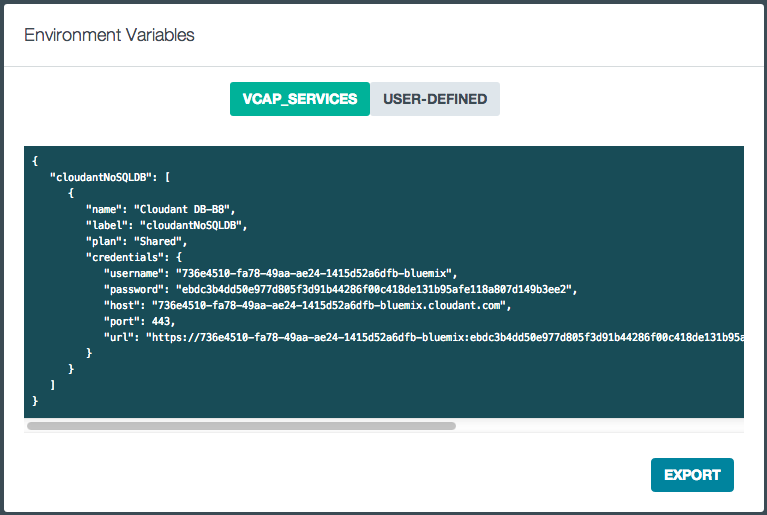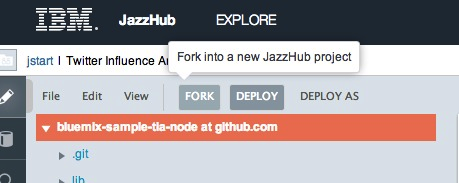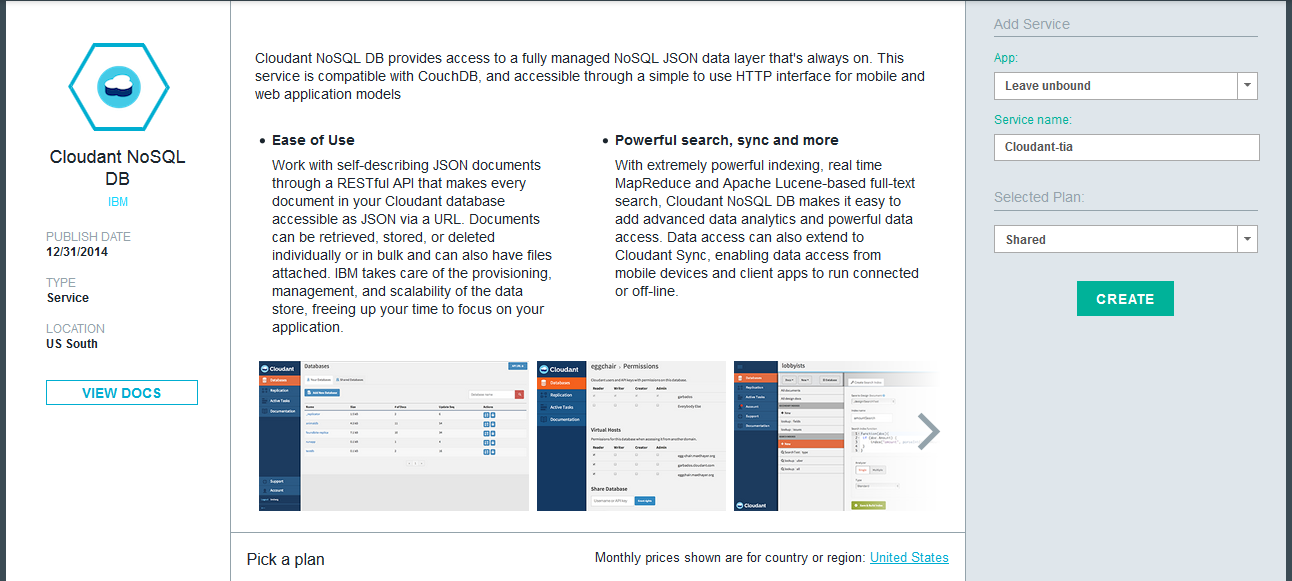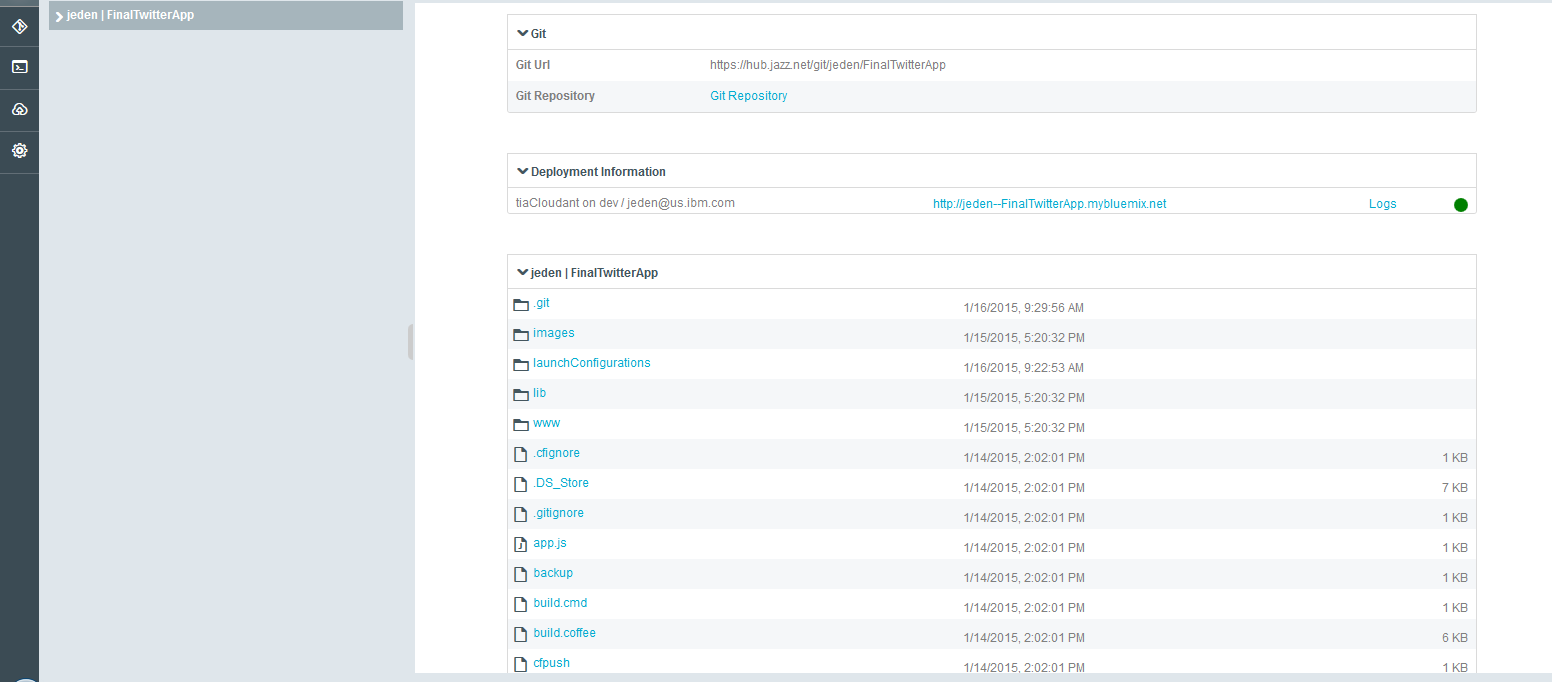Twitter Influencer Analyzer is a web application which collects data from Twitter, Klout and Google Maps to display influence relationships between twitter users.
This is a Node.js app that uses the following cloud services:
- Cloudant NoSQL DB
To work with the project or deploy it to the IBM Platform as as Service Codename: BlueMix, there are two main options:
Before we begin, we first need to install the cf command line tool that will be used to upload and manage your application. If you've previously installed an older version of the cf tool, make sure you are now using cf v6 by passing it the -v flag:
cf -v
You must create a config.json in the root directory. It's
listed in .gitignore, so it will not be stored in git. A
sample is available at config.json.txt.
Set the Klout and Twitter keys as appropriate.
For Klout, you can obtain a developer key here: http://klout.com/s/developers/home
For Twitter, you can obtain a key and secret here: https://dev.twitter.com/
Note that you just need simple keys here; for neither klout nor twitter will the user ever "sign in" - this application only deals with public data.
Now that you have finished configuring the project, you may either run it locally or skip straight to Running on IBM BlueMix.
You will need node.js installed (version 0.10.x or greater),
which comes with npm (version 1.1.x or greater).
You will also need an instance of CloudantDB running on
https://ace.ng.bluemix.net/. You will also need to get the "environment variables"
from bluemix (specifically the cloudant "url") and hardcode the application to call
the cloudant api via the url when run locally. In cloudant.js, set the CLOUDANT_URL
variable to be the url from the bluemix Environment Variables.
Once you have that in order:
-
create a git clone this repository; eg,
git clone https://github.com/ibmjstart/bluemix-sample-tia-node.git -
navigate to the cloned directory
-
run
npm installto install node pre-req modules
Finally, to run the app, use one of:
node app.jsnode lib/cli.jsnpm start./build.coffee serve(build serveon Windows)./build.coffee watch(does not run on on Windows)
The first four all do the same thing.
./build.coffee watch is used at development time. It will watch the source
directories, and restart the server when they change.
The server will print the URL at which it's available after it's started.
You should see something like this when you run:
bluemix-sample-tia-node: cloudant: url: https://736e4510-fa78-49a...bluemix.cloudant.com
bluemix-sample-tia-node: ---------------------------------------------------------------
bluemix-sample-tia-node: twitter bearer token retrieved
bluemix-sample-tia-node: starting server on pid 82546 at http://localhost:8000
In the terminal, go to the directory of your app and follow these steps:
-
Login to Bluemix.
usage: $ cf login [-a API_URL]example: $ cf login -a https://api.ng.bluemix.net -
Create an instance of the cloudantdb service. Be sure to make the service instance name exactly "Cloudant-tia" as that's required by the manifest.yml file.
usage: $ cf create-service SERVICE PLAN SERVICE_INSTANCE_NAMEexample: $ cf create-service cloudantnosqldb Shared Cloudant-tia -
Create a git clone of this repository ...
git clone https://github.com/ibmjstart/bluemix-sample-tia-node.gitFrom the cloned Twitter Influencer App directory, simply push the app. Note that the CloudantDB service is already binded to your app via the manifest file so long as you used Cloudant-tia for your database name. Also note that the app's name (APP) is used for the hostname of the application by default; therefore, be sure to use something unique such as "tia-" followed by your username so that it does not conflict with other user apps.
| usage: | $ cf push APP [-c COMMAND] |
|---|---|
| example: | $ cf push tia-<username> -c "node app.js" |
The -c flag is used to specify the start command that should be used by CloudFoundry when it runs your app.
That's it! For instructions on usage, please see Using the App from the Browser or just head over to your app's URL (such as http://tia-<username>.mybluemix.net) to start exploring!
-
Browse to the DevOps Services project repository located here.
-
Click on "Fork". This will provide you with a personal copy of the code within your DevOps Services project space.
- Rename
config.json.txttoconfig.jsonand set the Twitter and Klout API keys.
For Twitter, you can obtain a key and secret here: https://dev.twitter.com/
For Klout, you can obtain a developer key here: http://klout.com/s/developers/home
Note that you just need simple keys here; for neither klout nor twitter will the user ever "sign in" - this application only deals with public data.
- Go into the manifest.yml file and change the field after name to 'tia-yourUserName'.
Note that if this field is not unique among all your bluemix apps, the app will not work.
-
Go to bluemix.net and login. From the dashboard, click on add a service. Then click "View More" for the Cloudant NoSQL DB service and fill out the form as follows:
Note that the service name must be the same as in the image because that is the name expected within the manifest.yml file. You can change the service name if you'd like, but ONLY if you also change the corresponding name within the manifest.yml file.
-
Click on "Deploy" while the root directory is selected. This will use information within the manifest.yml to deploy the sample application directly into the BlueMix platform. You may continue to deploy changes to your BlueMix application directly from DevOps Services using the "Deploy" and "Deploy As" buttons.
-
Click on the Root Project Name and scroll to the Deployment Information section (below the README.md which will appear to the right).
You can check the status of the app using this section. If a green filled circle is visible, you may click the URL shown within the section and interact with the running application. However, if a red filled circle is displayed, you can check the logs for errors or go to bluemix.net and diagnose the problem there.
The app consists of 4 pages:
- the home page, which lists all the twitter users you have explored
- an individual's user page, displaying information about that user
- the messages page, displaying error and informational messages
- the help page, providing a legend of some of the symbols used
When you run the first time, there will be no users listed on the home page. Enter one in the prompter on the page, and press the Analyze button. That should take you to the individual's user page. When you traverse back to home (press the back button - or you can always click the 'Home' link at the top), you'll see that user in the list. As you explore more users, they will be pushed to the top of the list.
The list provides a "delete" button to remove the user from the list, a green badge showing their klout score, a search icon button which will display the individual's user page, and a twitter icon button which will take you to the user's twitter page.
The list of users is stored in your browsers local storage - it's not saved anywhere on the web.
The individual user page displays up to 4 things:
- list of twitter users this user is influenced by
- list of twitter users that are influenced by this user
- recent tweets
- a Google map if any tweets are geo-coded
For each of the influenced by and influences users, their klout score badget, a search icon button, and twitter icon button are displayed. Click on the search icon button to display that user's individual user page.
For tweets which are geo-coded, a numeric badge link is displayed; click on that bad to display the referenced location in Google Maps.
The web app is contructed as a single-page-app using
AngularJS. The web resources - html, css, and js files
are located in the www directory. Each 'page' in the app is designed as
a separate html view, with a controller to go with, located in the
www/controllers directory.
The web app issues XHR requests back to the server to get dynamic data from klout and twitter. To make the system appear non-laggy, the data previously returned from an XHR request is shown on the web page before the more recent data is returned from the server. Often, the data won't change.
The list of users you've explored, and other not-frequently changing data
is persisted to localStorage, bypassing the need to store that personal
data 'in the cloud'.
Google maps are generated in the browser using the Google Static Maps API.
The server does three basic things:
- serves static content for the web app - html, css, and js files
- serves XHR requests for klout and twitter data
- persists data in a CloudantDB cache
XHR requests are first checked to see if there is a recent response value in the CloudantDB cache. If there is, it's returned. Otherwise, a request is made of the appropriate service, and the response is then added to the cache, for future requests.
Licensed under the Apache License, Version 2.0 (the "License"); you may not use this file except in compliance with the License. You may obtain a copy of the License at
http://www.apache.org/licenses/LICENSE-2.0
Unless required by applicable law or agreed to in writing, software distributed under the License is distributed on an "AS IS" BASIS, WITHOUT WARRANTIES OR CONDITIONS OF ANY KIND, either express or implied. See the License for the specific language governing permissions and limitations under the License.



